JUMP TO
Introduction / Fundamentals / Dash / Cut / Wind / Ghost / Shoot / Poke / Nest / Pulse / Leech / Stim / Corp
PREVIOUS: Introduction
FUNDAMENTALS
When I talk about fundamentals in BOTOLO, I'm talking about everything
in the game unrelated to each player's selected power. Blocking, stealing,
movement, level layout, the physics of the ball - those parts of BOTOLO
which exist in every single match, those things which are *trumpet sounds*
fundamental.
Foremost, I’d like to note that BOTOLO is a game about making predictions.
Many new players try to play by reaction, only blocking after a steal has
already begun. The steal animation, however, finishes more quickly than a
human can react. Signals we perceive in the world take some amount of time
to reach our brain, and the command, “Press button!” takes some amount of
time to travel down our nerves. The cumulative effect of these is some small
amount of latency between the world as we perceive it and the world as it truly
is. By the time you block, you’ll have already lost the ball.
Other players perceive the game as a timing challenge, as though there were
some hidden rhythm to follow that would grant them success. No such rhythm
exists. The only tempo in BOTOLO is the offbeat, erratic drum of your opponent
attempting to weave their way through your defenses. This strange sheet music
they write in collaboration with you. Constantly shifting, you cannot read it
by any traditional means.
To block well in BOTOLO, you must make a prediction, and this prediction always
involves risk. The sooner you accept this danger, the better you’ll play.
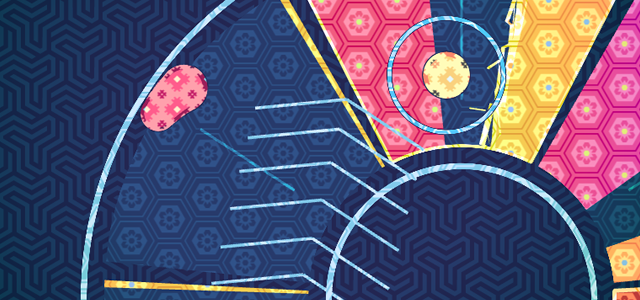
The most important aspect of BOTOLO fundamentals is understanding the shield
resource and how it affects blocking.
Every time you pick up the ball, you will receive a set amount of shield. So
long as you have shield, you may block steals. Once you run out of shield, you
will be unable to block. The circle around the player holding the ball (for
the sake of convenience, we'll call this player the defender) represents the
amount of shield remaining. The smaller the circle, the less shield you possess.
Whenever you block, you will spend an amount of shield related to how long you
hold the block button. The longer you hold, the more shield you spend. Regardless
of how long you hold, you will always spend a certain minimum amount, a bit like
an ante. It takes about 1/6th of a second (~10 frames) blocking to exceed the ante,
and any time you release block before this period is up you will have effectively
spent the same amount of shield for fewer active frames of block. Generally, you
want to hit as close to 1/6th of a second as possible without going over, as this
will maximize your time:shield ratio. Ignoring powers such as Pulse, there should
be no reason to hold block for anything less than this 1/6th second.
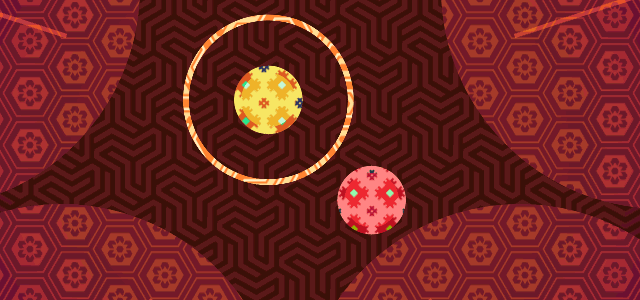
You should also be mindful of how much shield you have remaining. Shield regenerates
anytime you are not actively shielding, so if you do not outspend the ante, and wait
long enough between shields, you will have an extra sliver of shield to work with at
the end. The difference between blocking three times and blocking four times may be
the difference between losing the ball and gaining points from your opponent, so you
should endeavor to preserve as much of your shield as possible whenever you can.
Note that correctly blocking a steal also regenerates shield below a certain threshold.
Passive shield regeneration will only ever take you back to the starting amount, but a
good block will raise you slightly above it. The maximum shield capacity lasts about
four antes.
Other players will often attempt to simply wait beside you, trusting in their mere
presence as a force to expend your entire shield through panicked blocking. Against
such players, remain calm, block for the full ante, then wait until you regain about
as much shield as you lost. During this period you will slowly be gaining points, and
although it doesn't *feel* as cool as rapidly reading and blocking several successive
steal attempts, it does put you in an advantageous position. If your opponent is
consistently waiting you out of the ball, you want them to steal from you more frequently.
You must make yourself intentionally vulnerable by not blocking so that they are inclined
to steal earlier both for the benefit possessing the ball grants and to avoid the deficit
of slowly losing points to your wait. Once they steal more frequently, you may begin to
block more frequently.
At times, it is even beneficial for you to decide not to block at all, even if you have
plenty shield to do so. Allowing the opponent to steal strengthens your read of their
stealing habits and weakens their read of your blocking habits. If you have no read on
your opponent's stealing habits, there's no reason to block. You'd be reacting to your
own imagination, not to their actuality. You'd be chasing phantoms.
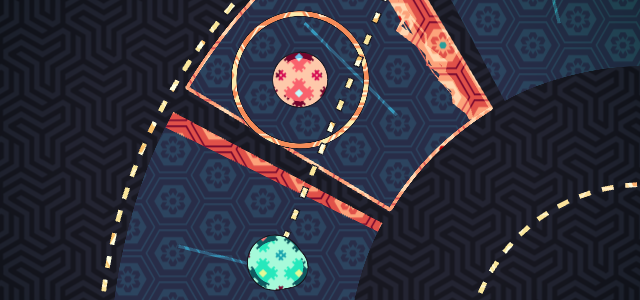
That brings us to shield release. Many people, when they begin to play the game, do not
properly consider the frames following the release of a shield to be "active" play time.
An action has concluded, both players are mentally resetting, trying to consider what
just happened, and planning for the future. Now is not the time to plan! At every point
in BOTOLO, you should simultaneously enacting a plan you made in the past while scheming
for the future. If your opponent seems to divide their thinking and acting time, the
proper place for you to act is during their thinking. If your opponent designates the
time following the release of their block as "inactive" time, steal, and kindly show them
the error of their ways.
When you are defending, you should have a plan for action at the release of your block
from its very start. Either you should be blocking again shortly after release to catch
the attacker stealing, or you should be waiting to recover shield and gain points if you
do not believe they will steal. Either way, plan well in advance which you will do.
Another place players tend to pause and plan is immediately after either player scores
points. It is frequently safe, as the attacker, to steal during this period. Occasionally,
it is even worthwhile to steal, expecting to be blocked, and steal again at your next
active frame. You will trade points for possession of the ball - essentially gambling that
A) the other player will stop to think or otherwise fail to shield after getting points,
and B) that trading possession of the ball is worth being blocked once. If you're ahead in
a given zone, or in the match overall, this trade tends to work out in your favor. If you're
trailing in points, however, this trade carries much more risk, as you must make more drastic
gains from possession.

Following an understanding of the shield resource, an understanding of spacing will aid your
fundamentals. In BOTOLO, an attacker is either close enough to steal or they are not. Thus,
as the defender, any time spent beside the attacker puts you at a disadvantage - a disadvantage
not only because you may lose the ball at any time, but also because you must spend attention and
shield to predict and defend against the attacker's steals. Additionally, it is a position in which
you are forced to "show your hand" a bit, and reveal your ideas about when the attacker is going
to steal. It costs you mental energy, it costs you shield and it costs you secrets.
It follows then that you should always be retreating from the opponent. Any time spent outside
steal range places the onus exclusively on the attacker to follow your actions, rather than
you to follow theirs. Once contact is broken, they must once more navigate toward you to
have a chance at reclaiming the ball. The attacker will always move faster than you, so at
times this can feel a futile effort. However, even a single frame beyond their reach is
unquestionably a frame in your favor, and since the cost of retreating is generally non-existent,
there is no reason not to retreat.

Frames spent away from the attacker segment their possible steal times in a significant way.
Consider that when the attacker steals, it will take 10 frames to complete. Let’s say I'm
standing beside you for 60 frames. If I want to steal from you, I must initiate my steal
somewhere within these 60 frames. The soonest I may place it is frame 1, the latest is frame
60. Your goal is to overlap the frames of your block with the frames of my steal, and there's
a lot of room for you to miss. Because I cannot steal sooner than frame 1, and my steal takes
10 frames, you may safely refrain from blocking until frame 10 and you will still catch any
steal I initiate on frames 1-10. That leaves you with 50 frames in which you must predict a
block. Imagine, now, that you break the steal range in the middle of that 60 frames, but 1 frame
later I move back in range. We're now looking at two 30 frame segments of contact. In both,
because of the 10 active frames of stealing, you need only worry about blocking between frames
10 and 30. That single frame of distance allows you to discard a whole 10 frames from
consideration, in this case reducing the total number of defensive frames from 50 to 40,
a 20% reduction.
Many players subconsciously place a special value on their first approach after breaking
contact, and are more likely to steal during these frames than later frames. The more often
you can make such players break contact and re-approach you, the more frequently they will
steal. The more frequently such players steal, the less risk you incur when blocking.
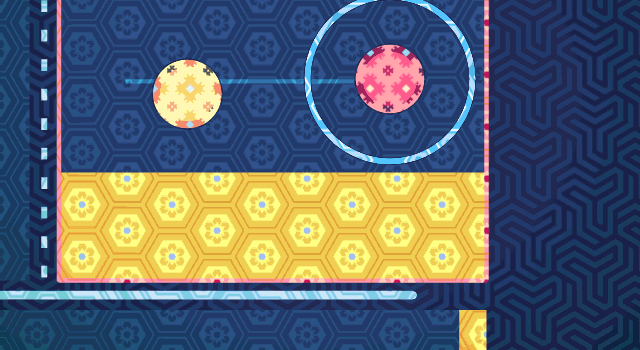
Consider also, at all times, the angle between yourself and the opponent. When the attacker
successfully steals, the ball will fly towards them and away from the defender. If, as the
attacker, you can angle the ball onto a zone you'd like to capture, you've saved yourself a
small bit of time and put yourself in a position where you may immediately begin getting
points on picking up the ball. If, as the defender, you angle the ball away from all zones
and into the void, you've placed the attacker into a position where they must now pass you
on the way back to the level. Passing you risks them losing the ball, or, if they block,
risks them beginning their defensive turn with less shield to spend. For the attacker, the
worst outcome from this interaction would be a blocked steal, which, off-zone, merely
restores their shield. This is one of the few times in the game the attacker may give
themselves a steal attempt with no risk of losing points. As the defender, try to pay
attention to the relation between angles and steals, as this may offer you further
indication of when the attacker intends to steal. It may even be possible to bait certain
opponent into stealing when you like by offering them a particular angle they're seeking.
Finally, let's talk about the very start of every match, the tip-off. Both players begin
an equal distance away from the ball and should be able to reach the ball at roughly the
same time. Assuming neither player lags significantly behind, this means that as soon as
either player picks up the ball, the other player is already in range to steal. Both players
must now decide whether to press a button or not to press a button, the benefit and deficit
of which varies depending on whether or not you possess the ball.
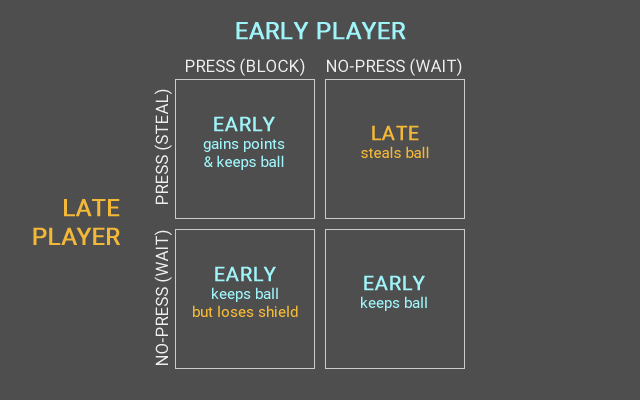
There is not necessarily any correct option here. No matter what you chose, there is an
option for your opponent that leaves them at a slight advantage. The uncertainty surrounding
whether or not you will possess the ball during this interaction only complicates matters further.
You may control which side of the equation you are on by slightly delaying your approach,
but delay too much and your opponent may become wise to your intentions. However, if both
players go in expecting to arrive later than the other, only the player who delays most will
be correct. It is therefore in your advantage to delay your approach as much as possible without
getting caught. That said, if you catch your opponent delaying, their advantage from knowing
which side of the equation they are on vanishes, as now both players possess this information.
Generally, the earlier player receives more out of these interactions than the later player,
as in three of the four states they retain possession and in one state they actually gain points,
whereas possession is the greatest possible benefit for the later player.
On the whole, pressing a button will lend you possession in three of four cases, but risks
losing points if you do not start with possession. If these states are evenly distributed
across all your matches, however, you will also gain points in 25% of situations, offsetting
your loss in the other 25%. Meanwhile, not pressing a button gives you possession in only one
of four cases, but never risks losing points immediately.
NEXT: Dash